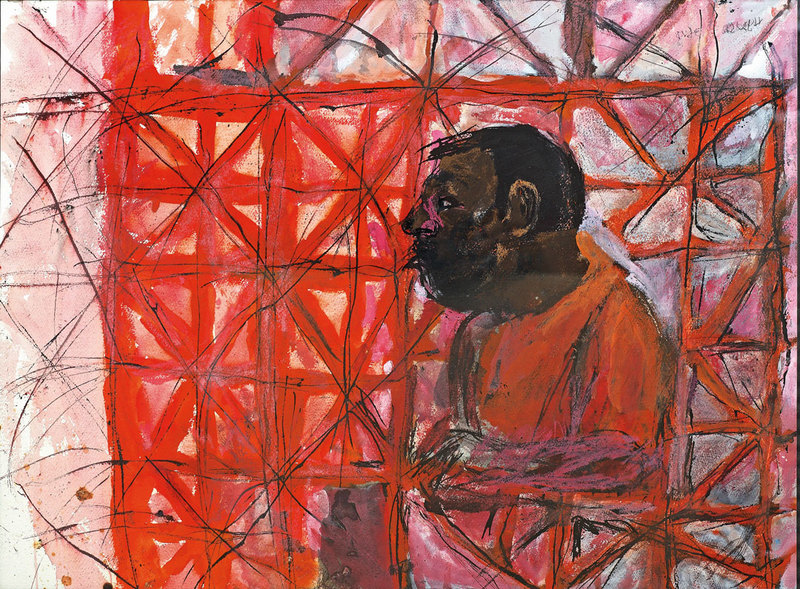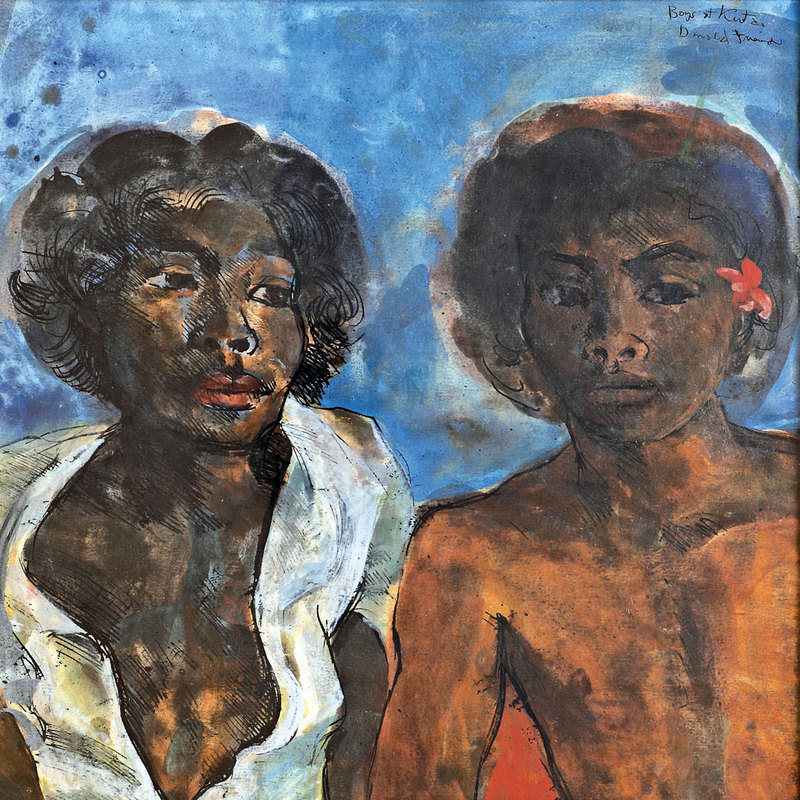
Neglected in his own home country down-under due to his adherence to figurative art and notoriously decadent way of life, the figure of Donald Friend is accepted unconditionally in Bali, the island on which he chose to live in towards the end of his life. While most of the foreign artists from W.O.J Nieuwenkamp to Arie Smit who depicted Bali came from Europe, when he first arrived on the island at the end of 1966, he was most likely the only artist originating from Australia working on the island. Bali seemed to mark the artist’s next-to-last if not final creative chapter of the artist’s life, before he returned to Australia in 1980.
ndeed, apart from Bali, Friend also spent much, if not most, of his life outside Australia, from Nigeria, London, Italy, the Malay Peninsula and Borneo as well as Sri Lanka. His profusion of travel reflected his search of freedom which he seemed not able to find in Australia. Bali was initially intended only as a stopover en route to India and Europe. However, he ended up staying for several weeks and did not proceed on his planned trip until he purchased land on Sanur beach. Upon his return to Bali half a year later, he began construction of a house and decided to stay on for an indefinite period of time.

His decision to reside on Bali was almost certainly modelled after other artists who travelled to far and exotic places. While he arrived during a highly sensitive and perhaps even dangerous time politically (immediately following the 1965 abortive Coup d’Etat blamed on the Communists), he indeed “lived a life of inspirational indulgence and luxury” on the island. The experiences on the island, coloured by a great variety of intriguing personalities he encountered and enriched by the complex culture and traditional customs of the Balinese, relentlessly provided him with artistic insights that shaped his works.
The collection of artworks by Donald Friend in the museum collections in Indonesia shows his main interests and his wide ranging command of artistic styles. Most of the art pieces in the collections are drawings of young Balinese men rendered in pen and ink, superimposed on watercolours or gouache on paper. He also had his favourite models that reappeared again and again in the various pictures he depicted. His Donald Friend’s virtuosity in depicting the human figure is unquestioned. Even before his arrival on Bali, Robert Hughes is said to have named him “one of the two finest draughtsmen of the nude in Australia.” Friend’s great talents certainly advanced during his fourteen year stay on the island.
Sometimes, his paintings of young men were transformed into artworks that combined scenes originating from his very own daily experiences with depictions of his own fantasy inspired by his readings of Balinese myths and legends. The artwork entitled Kbo Iwo Destroys the Palace of Gelgel, for example, seems to be a historical or imaginary record of his experience of utter chaos during the construction of his house, as he recounted in his book, Donald Friend in Bali, which was published in 1972. The experience seemed to provide him with insight to the acts of the legendary hero Kebo Iwo, about whom he also wrote in the book. Unfortunately, it is rare for him to date his works and therefore it makes it difficult to place them in the historical development of artistic career. In The Stone Horseman at Yeh Pulu, he blends a depiction of a young male nude set in front of rock-cut reliefs between Ubud and Gianyar. The artist masters his media so well; lines and washes seem to run uncontrollably on the thick watercolour paper, yet creating a composition that is aesthetically intriguing.
It is indeed common for him to draw attention toward the background of the artwork, while presenting the figure of face of the young boy or young boys in the foreground. His self-portrait is set against a strong red pattern in the background. Highly stylized depictions of a small variety of animals done in rather thick gouache appear in the background of the painting titled The Zoo. In the foreground the heads of four young boys in various poses pop up from the lower part of the canvas. Similarly, A Screen of Wayang Figures also places emphasis on the background of the artwork, while typically, two young boys appear as the main subject matter in the foreground.
While indeed many of his artworks were depictions of young men, he also painted equally intriguing portraits of young women, depictions of daily life in Bali and other subjects. Bali Girl is but one example. Dogs Barking at an Eclipse is another. While he inscribed his pen on a wet paper to create Fighting Cocks, the ink ran and made imperfect delineations of the figures that he intended to render. Yet that did not seem to bother him that much. In fact he did not strive for clinical perfection in creating his painting. Rather, he used washes of colors spontaneously to an aesthetic composition that seemed loose and free, reflecting his own free spirit. His art “has always looked too easy – decorative, flowing and natural,” noted art scholar Lou Klepac. Robert Hughes wrote of the artist and his work: “He is enormously productive; his hand runs away with him, diffusing his output.”

Myths and legends indeed seem to be blended into reality in some of his artworks. In The Keris Seller, two boys surround a man bearing a Keris. The man seems to resemble the artist himself, making it unclear whether the work is a depiction of a scene from daily life, or if it is the artist’s philosophical projection or imagination of his role in Balinese society. It reminds us of what Friend himself wrote: “Some of us live as legends because the best way we know to tell the truth is to invent fairy tales.”
While some consider “Donald Friend’s greatest fame came during his years in Bali, where he lived and worked between 1966 and 1980” others agreed that “Bali did not produce his greatest period of art”. Be that as it may, what he did produce in Bali was a vast portfolio of wonderful as well as many great pieces of art. More importantly, Bali gave him the freedom and joy in working as an artist without having to worry about any labels about his position in the island’s art history.
However, he will be accepted and recognized down under, in Indonesia and particularly in Bali Donald Friend will always be considered as a good friend, who has enriched the diversity of the country’s inclusive development of art. Ironically, he has become a symbol of Australia’s friendship with the Indonesian art world.






